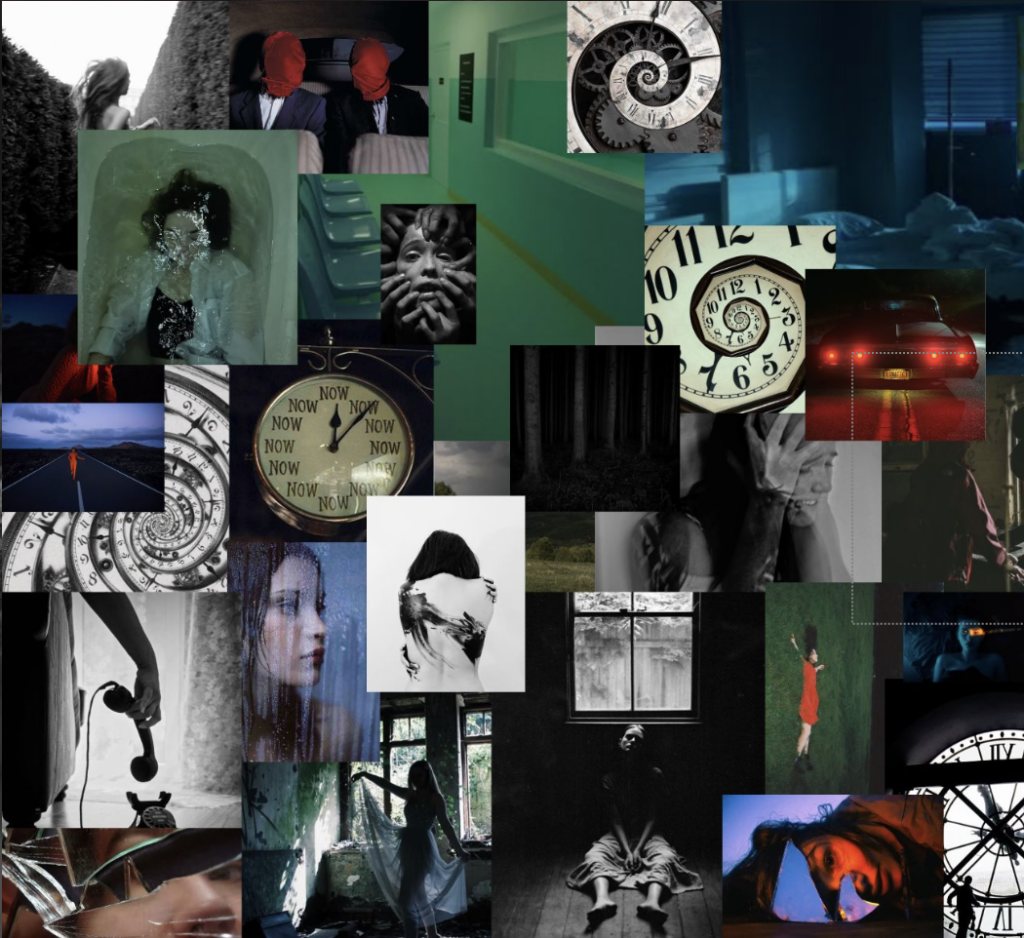
Preliminary Task 1
In our first AS media Preliminary Task, the class was given a brief : “You haven’t left the house for months. If you don’t leave today, you never will.” The way our group approached this brief was to create a horror story. In our 30 second scene, the plot begins in a dark room with a girl lying asleep. She wakes up suddenly with a expression of fear. An alarm goes of slightly after she has woken up and then the camera pans to the fast ticking clock and then finally the hand of a man holding a knife. In my group, my roles included the creation and design of the slideshow, the design of the original brainstorm and I helped with the story idea and the plot. The most enjoyable part of this task was creating the brainstorm as I was able to just put all my ideas out and combine them with others ideas to create a better story.
What I found challenging was cutting down our story to fit in a 30 second time frame as we had a large amount of ideas we wanted to include. With my experience of this task, next time I would spend much more time focusing on the micro elements as in our presentation we lacked detail in this area. My strengths in this task was keeping my team members focused, design elements and at some points taking charge. In the future I need to focus on storyboards and more technical elements of the piece. an example of some feedback from my groups pitch was “Increase detail in images of storyboarding (AI images lacked detail), including editing techniques for impact” We used sound to create a scary foreboding atmosphere, camera to create a sense of perspective, mise-en-scene to revert the props, setting and characters back to the context of our piece and finally lighting to create a sense of ominous atmosphere.
Preliminary Task 2 : Pre Production
For this task, we are creating a one-minute film in groups of four. Our prompt includes the following criteria: it must include the dialogue “He’s gone,” must feature a prop of significance, and must present some kind of unanswered question. After brainstorming ideas based on this prompt, my group and I decided to incorporate elements of crime into our film, drawing inspiration from classic crime and thriller narratives. We developed a concept centered around a wealthy man, Nathaniel, who is kidnapped by two men when he arrives home from work. He later wakes up in a dimly lit room with a pillowcase over his head and his hands bound. As he regains consciousness, he hears footsteps, and his wife, Carmen, slowly utters the words we have all been dreading: “He’s gone.” Confusion and dread flood Nathaniel’s mind—has she come to save him, or was she behind this all along? Before he can speak, the screen cuts to black. A single gunshot rings out.
To enhance the crime elements in our film, we focused on themes of power, deception, and betrayal, leaving the audience questioning motives and allegiances. The use of a dimly lit room helped create an eerie and suspenseful atmosphere, reinforcing the feeling of entrapment and danger. The inclusion of the gunshot at the end added a dramatic and violent conclusion, a common trope in crime stories, leaving the audience with an unresolved mystery.
We then divided up our pre-production tasks, and I worked with my team to create a PowerPoint for our final pitch. Individually and Collectively, I drew up brainstorms, crafted the timeline, and planned key elements of the final piece, ensuring that our crime theme was effectively executed. Additionally, I helped keep my group on task at moments when distractions arose, ensuring that we stayed focused on developing a gripping and suspenseful crime narrative.
Mood Board – Displayed on the right
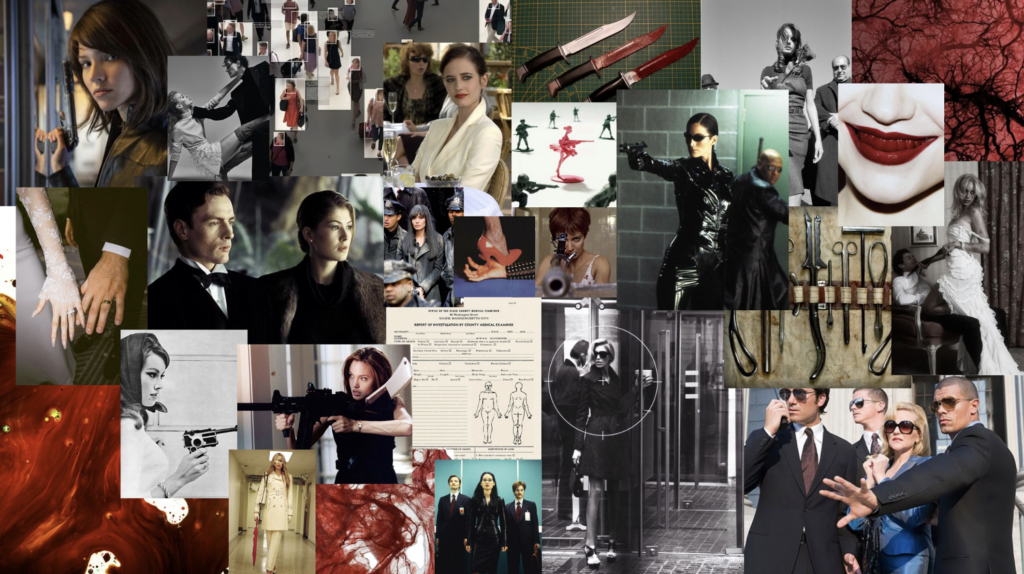
Original Timelines + Storyboard
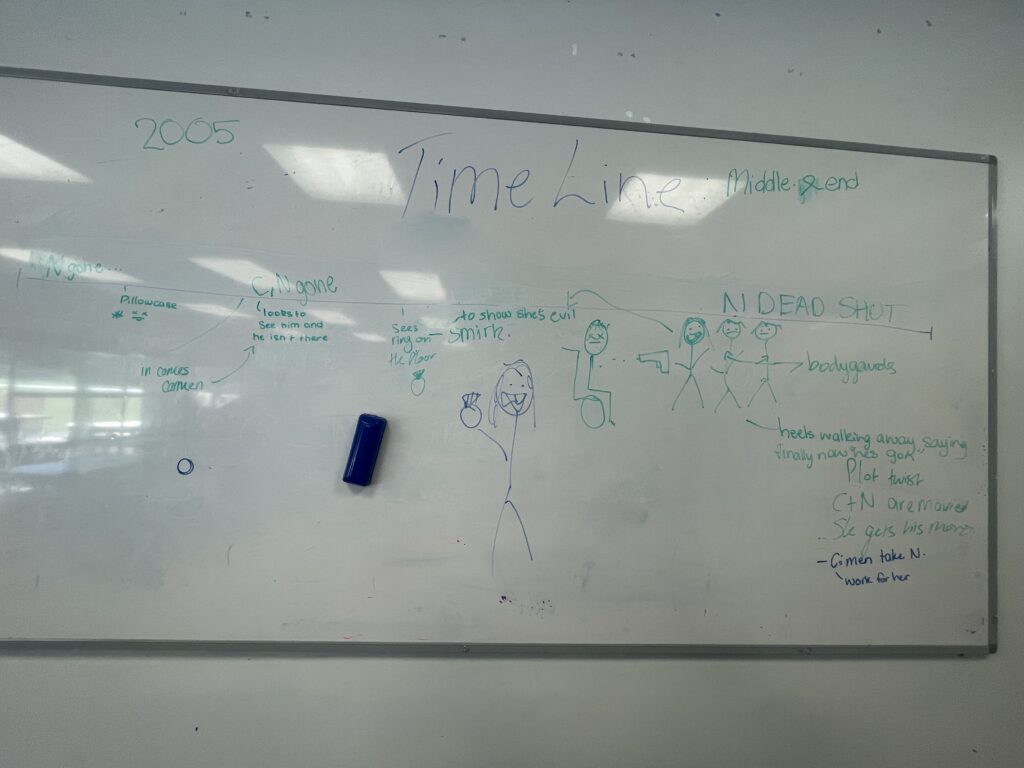
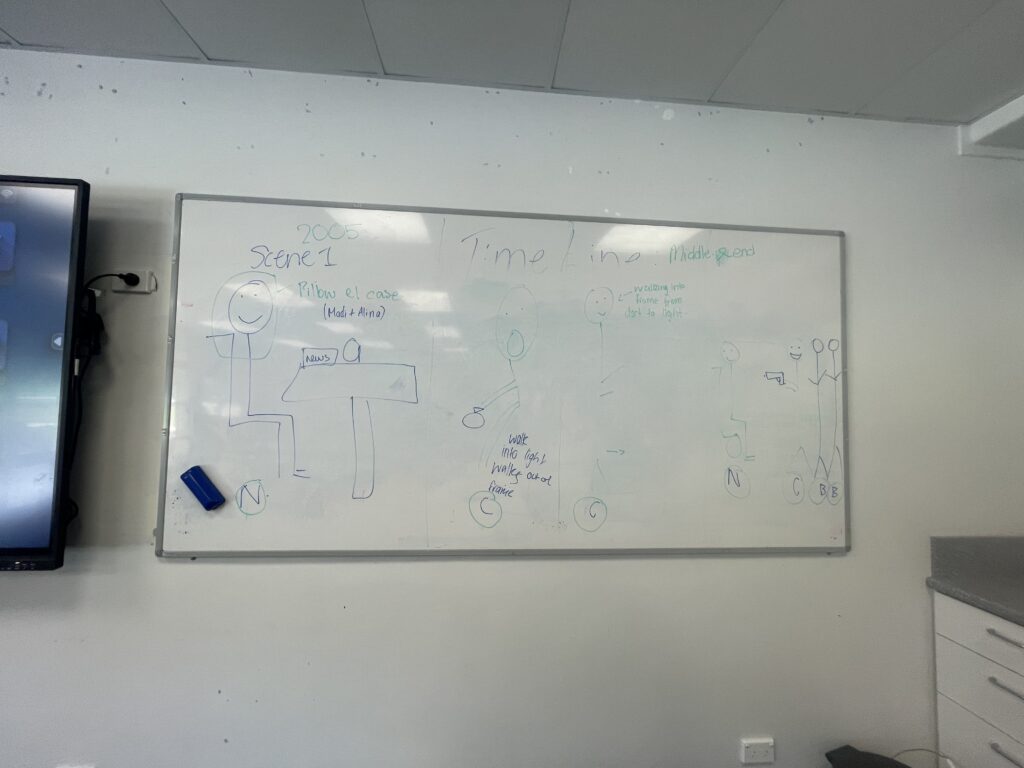
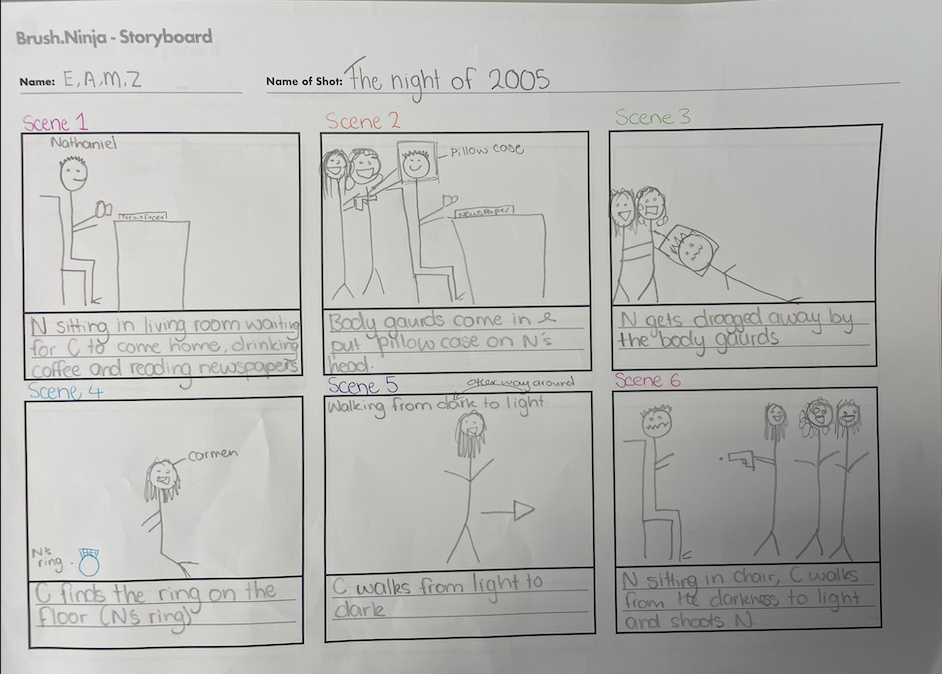
Preliminary Task 2: Post
For my personal edit of our footage, I decided to use CapCut because, as a beginner, I wanted a user-friendly tool that would allow me to experiment while still producing a polished result. I found the process of aligning lighting and sound effects with our camera work particularly satisfying, as it helped enhance the realism of the scene. The ease of placing and blending clips together made the workflow smooth, allowing me to create a cohesive narrative. One technique I used was a jump cut to depict the two different timelines simultaneously, incorporating mise-en-scène to subtly indicate that Carmen’s clips were filmed after Nathaniel’s kidnapping. I also used crosscutting to heighten suspense, strategically revealing information by alternating between Carmen’s scenes and Nathaniel’s abduction which is a key element of the mystery genre. This technique not only built tension but also allowed me to control the pacing of the narrative, keeping the audience engaged. To enhance the mystery further, I layered sound design elements, such as echoing footsteps and the movement of the body and props, to create a sense of unease and uncertainty. However, a significant challenge was working with a limited amount of footage and camera angles, which made it difficult to build a dynamic and engaging sequence and something I want to spend more time planning before the final performance. To improve in the future, I would ensure we capture multiple takes of the same scene from different angles, giving me more flexibility in post-production and allowing for a more polished edit. This task has taught me that editing is a meticulous process, where every cut, transition, and sound effect must serve a purpose in driving the story forward.
My group and I all shared our personal edits and decided on ______’s one to showcase to the class. We liked this cut the best because ……….